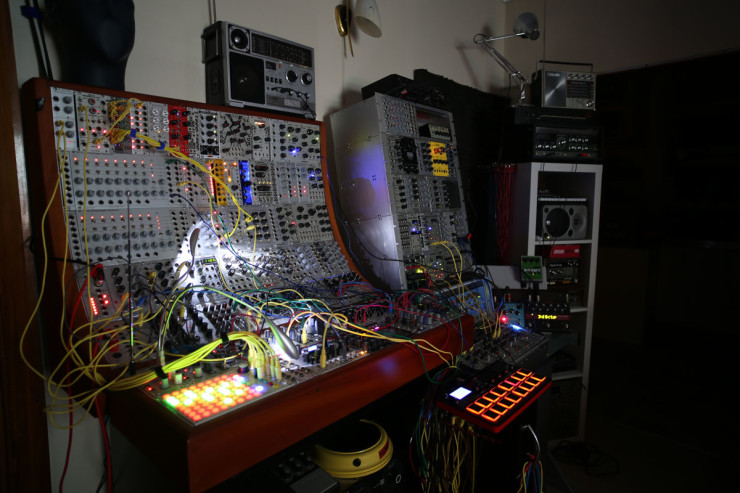
The first time I saw a modular synth, I was taken aback by the massive nest of patching cables, seemingly flying off in all directions and connecting various devices with countless knobs and flashing lights, somehow creating all kinds of strange sounds. Coming up in a mostly digital world, such a mass of wiring was somewhat foreign to me. Sure, I had put together studios before, but those kinds of wiring setups were far more linear, at least as far as I was concerned. While I had spent a lot of time with Propellerhead’s Reason, virtually patching together all kinds of sound modules, I couldn’t even begin to compare it to the sight of a rack of analog modular hardware. However, I finally got to sit behind a modular at the NAMM show in Anaheim, California last year, and after just a few moments of fiddling, I was hooked.
Before I knew it, twenty minutes had gone by, and I didn’t want to stop. As Tim Prebble described it, working with modular gear “feels intuitive and immediate, and it rapidly invokes that unconscious feeling of being in the flow…Every time I switch on the modular I find 2-5 hours tends to disappear, as I will get totally lost in the sound.”
“I started building a small modular synth primarily for processing audio,” Prebble explained. “I wanted true analog filters available, with CV, to use with my other analog outboard. But the first three modules I bought were a revelation; within ten seconds of patching them together and hearing what was capable it was like falling in love again with the immediate and raw organic nature of sound.” From my limited time with modulars, I definitely agree. The entire process had a very organic feeling, from patching in the very first cables to tweaking parameters. Having some kind of a control for each and every parameter made it incredibly easy to create new sounds, even for someone like me with absolutely no idea what I’m doing.
Once you start understanding the basics, altering the sounds becomes somewhat of a second-nature, while also holding on to that feeling of constant discovery each time you change something. This ability to work uninterrupted with analog modulars may be on of their most powerful aspects. “Digital, especially Arduino, is very tempting as it makes it relatively easy to set up new features,” software and electrical engineer Paul Geffen told me. “But once the idea is in code and loaded on the board, it’s hard or impossible to change it without another round of programming. That interrupts the flow.” When dealing with an analog modular, one can simply re-wire on the fly, changing the behavior of the modules, altering the sound, and creating something brand new.
Based on my own experiences and having spoken to a few different users, I’ve found that working with modulars makes you work and think differently. Since there’s no simple way to “recall” a patch like on a normal synth, the workflow is somewhat different. Working with a modular requires a combination of planning and experimenting. “[If] I am pursuing a specific sound (for example recreating sound for archival footage of the atom bomb USA dropped on Hiroshima, for the film “Emperor”) then it involves thinking and theorising how I might make that sound and then patching a version, performing with it & listening to variations and then evolving it,” said Prebble. “If for a specific music purpose I imagine & evolve a patch…. but sometimes it is simply experimental, finding sounds, tonality or trying different architectures and playing with the results.
“I like analog and modular because that’s how I like to work,” explains Geffen. “I want to explore and discover by following my intuition. Digital forces me to think ahead and plan.” This process of experimenting was echoed by many of the others I spoke to. One of the people I chatted with a the modular booth at NAMM would get a patch up and running, pull a few cords and say “Now let’s see what else we can make it do!” Even for me, an admitted novice, the freedom to simply start plugging things in and playing around was a refreshing change in pace. As Tim Prebble told me, “It takes time to become familiar with each individual aspect of it, but the ramifications of what is possible through patching is infinite…”
Special thanks to Tim Prebble and Paul Geffen for taking some time to talk to me about modular synths.
[…] https://designingsound.org/2015/03/hard-patching-modular-synths/ […]